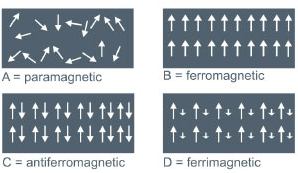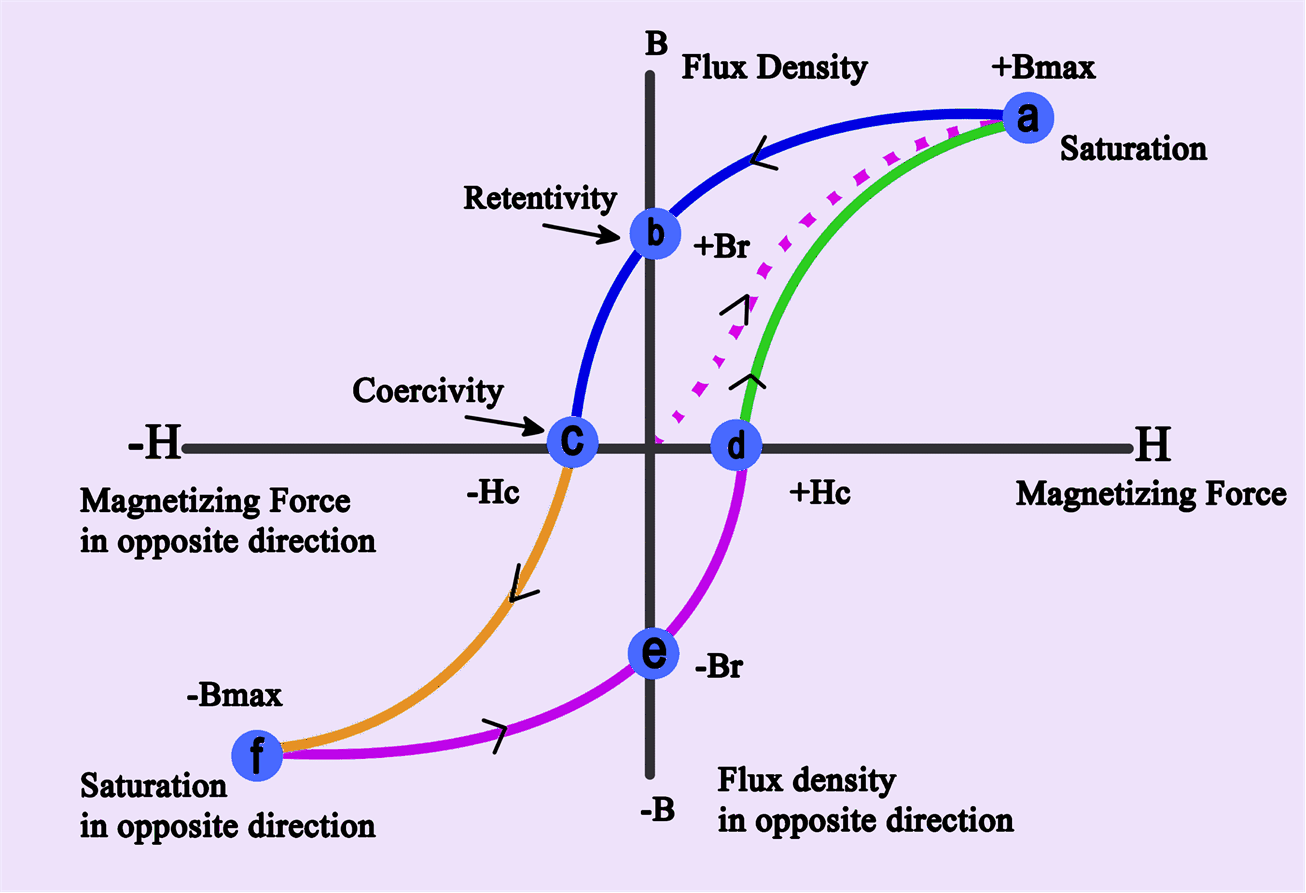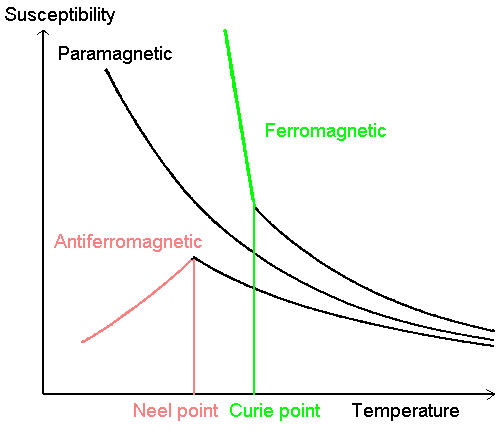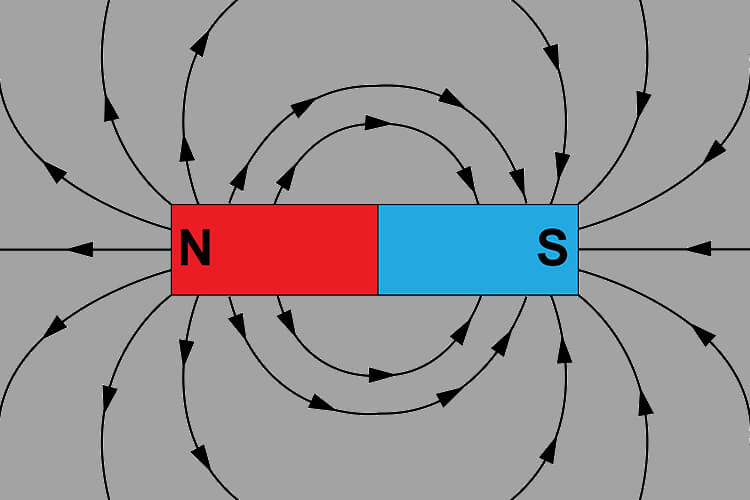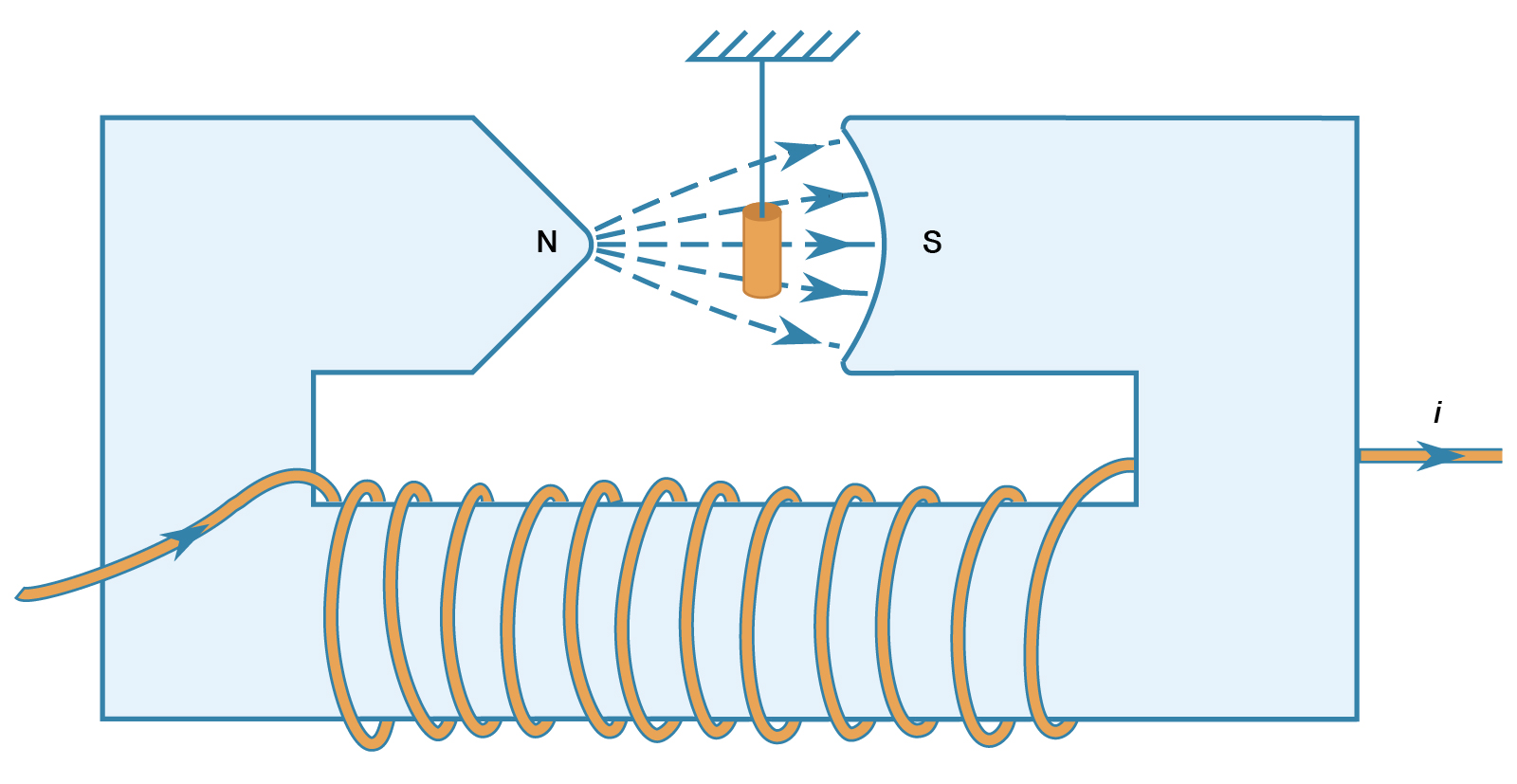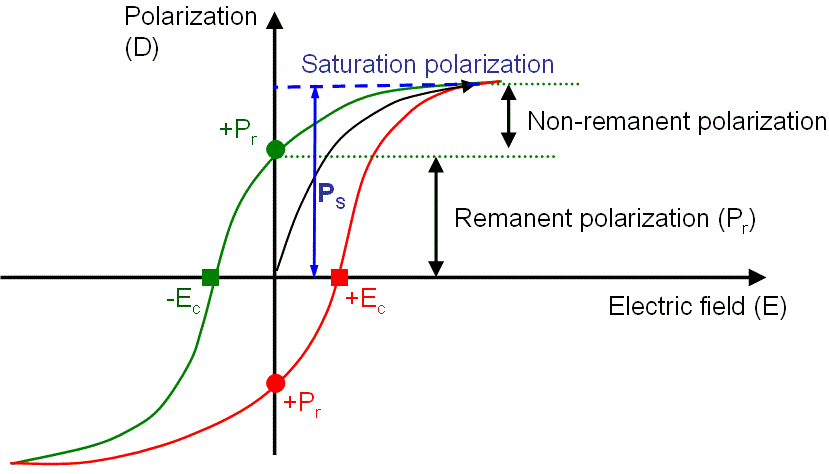You simply need to know - Macroscale
Classification of magnetic materials
Diamagnetism
The most common way of classifying magnetic properties of materials is by their response to an applied magnetic field; therefore, both relative permeability and relative susceptibility can be used to differentiate between classes of materials. As such, it is said that materials that can be magnetized to a certain extent by a magnetic field are called magnetic. We start with diamagnetism, which is a weak form of magnetism, attributed mainly to the orbital motion of electrons that create a magnetic moment when viewed classically as a “current loop.”
Paramagnetism
For a certain class of materials known as paramagnetic materials, the relative permeability is only slightly greater than one. It is independent of magnetic field strength, and will decrease with increasing temperature, provided it is not temperature independent. Many metals fall into this class, such as platinum or palladium, and also salts of iron or of the rare earth metals, or elements like sodium, potassium, and oxygen. Ferromagnets become paramagnetic above the Curie temperature Tc.
Antiferromagnetism
Antiferromagnetism is a type of magnetism with an ordered arrangement of antiparallel aligned spins on different sublattices, such that the antiferromagnetic structure has no net spontaneous magnetization. Antiferromagnetic materials have small permeabilities and are, therefore, often classified as paramagnetic. Antiferromagnets exhibit a small positive relative susceptibility that varies with temperature similar to paramagnetism when higher temperatures are reached; however, this dependence has a unique shape below a critical temperature.
Ferrimagnetism
Ferrites exhibit a kind of magnetism known as ferrimagnetism that is in some ways similar to both ferromagnetism and antiferromagnetism. In ferrimagnetic materials, since ions are placed on two different types of lattice sites, such that spins on one site type are oppositely oriented to spins on the other lattice site type, they tend to be compared to antiferromagnetic materials. Since antiferromagnets are not strongly magnetic, and ferrimagnets have a spontaneous and non-negligible magnetization, ferrimagnetic materials are often compared to ferromagnets.
Ferromagnetism
We should finally mention ferromagnetism; however, given that so many concepts in this book apply directly to ferromagnetic materials, they will be frequently discussed, and, therefore, no section alone can be dedicated to them. In essence, ferromagnetic materials have a permeability that depends on the field strength and on the previous magnetic history. They approach magnetic saturation as the field strength continues to increase, meaning that the material can only be magnetized to a finite limit. Ferromagnets contain spontaneously magnetized magnetic domains, where a magnetic domain is an entity with a total domain magnetization.
Article src: Magnetism: Basics and Applications, Stefanita, Carmen-Gabriela, Springer Heidelberg Dordrecht London New York, 2012.
Hysteresis loop
The essential practical characteristic of any ferromagnetic material is the irreversible nonlinear response of magnetization M to an imposed magnetic field H. This response is epitomized by the hysteresis loop. Hard magnetic materials have broad, square M(H) loops and they are suitable for permanent magnets. Soft magnetic materials have very narrow loops. They are temporary magnets, readily losing their magnetization as soon as the field is removed. The applied field serves to unveil the spontaneous ferromagnetic order that already exists on the scale of microscopic domains.
The hysteresis loop is central to technical magnetism; physicists endeavour to explain it, materials scientists aim to improve it and engineers work to exploit it. The loop combines information on an intrinsic magnetic property, the spontaneous magnetization Ms which exists within a domain of a ferromagnet, and two extrinsic properties, the remanence Mr and coercivity Hc, which depend on a host of extraneous factors including the sample shape, surface roughness, microscopic defects and thermal history, as well as the rate at which the field is swept in order to trace the loop.
Article src: Magnetism and Magnetic Materials, J. M. D Coey, Cambridge University Press, 2010.
Magnetic field strength
The magnetic field can be described by the vector fields B and H which are linearly related by
B = μο H
where μο = 4π x10-7 H m-1 is the permeability of free space and the H-field is known as the magnetic field strength or magnetizing force. The two magnetic fields B and H are just scaled versions of each other, the former measured in Tesla (abbreviated to T) and the latter measured in A m-1. In a magnetic solid the relation between B and H is more complicated and the two vector fields may be very different in magnitude and direction. The general vector relationship is
B = μο (H+M).
Article src: Magnetism and Magnetic Materials, J. M. D Coey, Cambridge University Press, 2010.
Curie temperature
A demagnetization method is to heat the sample above its Curie point, at which it becomes paramagnetic, and then to cool it in the absence of a magnetic field. This is called thermal demagnetization. Thermal demagnetization is achieved by heating the sample above its Curie temperature and cooling in zero field. This is tedious at best, and furthermore once any significant field is applied to the sample, the demagnetized state is lost and can only be regained by another thermal cycle. So usually a demagnetized state is achieved by subjecting the sample to a series of decreasing positive and negative fields.
Article src: Introduction to Magnetic Materials (2nd Edition), B. D. Cullity, C. D. Graham, Wiley-IEEE Press, 2008.
Magnetic induction
When a magnetic field H has been generated in a medium by a current, in accordance with Ampere's law, the response of the medium is its magnetic induction B, also sometimes called the flux density. All media will respond with some induction and, as we shall see, the relation between magnetic induction and magnetic field is a property called the permeability of the medium. For our purposes we shall also consider free space to be a medium since a magnetic induction is produced by the presence of a magnetic field in free space. The magnetic induction is most usefully described in terms of the force on a moving electric charge or electric current. If the induction is constant then we can define the tesla as follows. A magnetic induction B of 1 tesla generates a force of 1 newton per meter on a conductor carrying a current of 1 ampere perpendicular to the direction of the induction.
Article src: Introduction to Magnetism and Magnetic Materials (1nd edition), David Jiles, Chapman & Hall/CRC, 1991.
Magnetic field
What do we mean by 'magnetic field'? tt
One of the most fundamental ideas in magnetism is the concept of the magnetic field. When a field is generated in a volume of space it means that there is a change in energy of that volume, and furthermore that there is an energy gradient so that a force is produced which can be detected by the acceleration of an electric charge moving in the field, by the force on a current-carrying conductor, by the torque on a magnetic dipole such as a bar magnet or even by a reorientation of spins on electrons within certain types of atoms.
The torque on a compass needle, which is an example of a magnetic dipole, is probably the most familiar property of a magnetic field.
Generation of a magnetic field
What causes magnetic fields in the first place?
A magnetic field is produced whenever there is electrical charge in motion. This can be due to an electrical current flowing in a conductor for example, as was first discovered by Oersted in 1819. A magnetic field is also produced by a permanent magnet. In this case there is no conventional electric current, but there are the orbital motions and spins of electrons (the so called 'Amperian currents') within the permanent magnet material which lead to a magnetization within the material and a magnetic field outside. The magnetic field exerts a force on both current-carrying conductors and permanent magnets.
Article src: Introduction to Magnetism and Magnetic Materials (1nd edition), David Jiles, Chapman & Hall/CRC, 1991.
Magnetization
The quantity that describes the degree to which the magnets are magnetized called the intensity of magnetization, or simply the magnetization, and is written M (or I or J by some authors). We have an alternative definition of the magnetization M as the pole strength per unit area of cross section. Τhe unit of magnetization M is erg/oersted cm3. However, it is more often written simply as emu/cm3, where “emu” is understood to mean the electromagnetic unit of magnetic moment. However, emu is sometimes used to mean “electromagnetic cgs units” generically. It is sometimes convenient to refer the value of magnetization to unit mass rather than unit volume. The mass of a small sample can be measured more accurately than its volume, and the mass is independent of temperature whereas the volume changes with temperature due to thermal expansion.
Article src: Introduction to Magnetic Materials (2nd Edition), B. D. Cullity, C. D. Graham, Wiley-IEEE Press, 2008.
Coercive field
The term coercive field is often loosely applied to any field, including Hc, which reduces B to zero, whether the specimen has been previously saturated or not. When “coercive field” is used without any other qualification, it is usually safe to assume that “coercivity” is actually meant. Values of the coercive field are generally not much affected by demagnetizing effects, since they are determined when the magnetization is at or near zero. Permanent magnet materials, in which the values of susceptibility are low and uncertain, are normally measured in closed magnetic circuits where the demagnetizing fields are kept small.
Article src: Introduction to Magnetic Materials (2nd Edition), B. D. Cullity, C. D. Graham, Wiley-IEEE Press, 2008.
